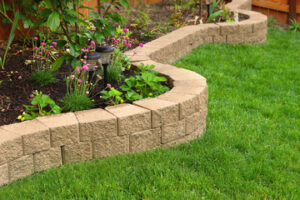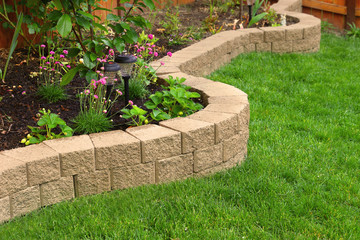Landscaping Springdale AR transforms outdoor spaces into functional and visually appealing environments. It involves designing and modifying land to enhance its aesthetic and practical value. Careful planning ensures that the space meets both personal and environmental needs. Effective landscaping creates a harmonious balance between nature and structure.
The choice of plants plays a significant role in landscape design. Selecting native and low-maintenance plants ensures that the garden thrives with minimal care. Mixing textures and colors adds visual interest and depth. A diverse plant selection creates a dynamic and balanced atmosphere.
Hardscaping elements such as paths, walls, and patios define the structure of the landscape. Using natural materials creates a seamless transition between built and natural spaces. Well-placed hardscaping improves accessibility and organization. Combining soft and hard elements enhances the overall flow of the design.
Water features add a sense of tranquility and movement to a landscape. Ponds, fountains, and streams create a calming ambiance. The sound of flowing water masks unwanted noise and enhances relaxation. Strategically placed water features serve as focal points.
Lighting enhances the beauty and functionality of outdoor spaces. Path lights, uplighting, and spotlights highlight key features. Soft lighting creates a warm and inviting atmosphere. Proper illumination improves safety and extends the usability of the space.
Vertical gardening maximizes space and introduces new visual layers. Climbing plants, wall planters, and trellises create green walls. This approach is ideal for small spaces and urban areas. Vertical gardens improve air quality and increase privacy.
Eco-friendly landscaping incorporates sustainable practices. Rain gardens capture runoff and reduce water waste. Using drought-resistant plants minimizes irrigation needs. Sustainable landscaping reduces environmental impact while enhancing natural beauty.
Seasonal planting ensures that the landscape remains vibrant throughout the year. Rotating plants based on climate patterns keeps the garden visually dynamic. Early bloomers add color in spring, while hardy plants thrive in colder months. A balanced seasonal plan maintains year-round appeal.
Edible landscaping combines functionality with aesthetics. Integrating herbs, vegetables, and fruit-bearing plants adds value to the garden. Raised beds and container gardens make harvesting easier. A well-designed edible landscape supports self-sufficiency and healthy living.
Outdoor seating areas enhance the comfort and usability of the space. Weather-resistant furniture and shaded spots provide relaxation zones. Fire pits and outdoor kitchens create gathering spaces. Comfortable seating encourages outdoor activity and social interaction.
Natural barriers provide privacy and protection from the elements. Hedges, trees, and decorative screens define boundaries. They reduce noise pollution and create a sense of enclosure. Proper placement ensures that barriers enhance rather than restrict the space.
Wildlife-friendly landscaping supports local biodiversity. Providing food sources and shelter encourages birds and pollinators to visit. Native plants and water sources create a balanced ecosystem. Encouraging wildlife activity promotes natural pest control and pollination.
Texture and color variations create visual depth and interest. Combining smooth and rough surfaces adds contrast. Layering plants with different heights and forms enhances movement. A cohesive color palette ties the design together.
Low-maintenance landscaping reduces the need for frequent care. Using mulch and ground covers minimizes weed growth and retains moisture. Drought-tolerant plants thrive with minimal watering. A well-planned low-maintenance design ensures long-term beauty and ease of care.
Outdoor structures like pergolas and gazebos provide shade and architectural interest. Climbing plants can enhance these structures. Well-placed pergolas define gathering areas and frame views. Blending natural and built elements creates a balanced environment.
Pathways create flow and guide movement through the landscape. Curved paths add a sense of mystery and discovery. Gravel, stone, and wood provide varied textures and visual appeal. Defined paths improve access and organization.
Lawn alternatives offer eco-friendly and low-maintenance options. Ground covers, ornamental grasses, and moss create lush green spaces. These alternatives require less water and maintenance. Replacing lawns with diverse plantings improves ecological balance.
Rainwater harvesting supports sustainable landscaping practices. Collecting and storing rainwater reduces reliance on municipal water sources. Directing runoff to rain gardens enhances soil health. Efficient water use promotes long-term garden health.
Garden art and decorative features add personality to the landscape. Sculptures, mosaics, and wind chimes introduce creative elements. Art pieces serve as focal points and conversation starters. Integrating art into the design reflects personal style.
Perennial plants provide lasting value and stability. They return each year and require less maintenance than annuals. Mixing perennials with seasonal plants creates consistent visual appeal. Strategic planting ensures a balanced bloom cycle.
Native landscaping supports the local ecosystem. Native plants require less water and adapt well to the climate. They provide habitat and food for local wildlife. Native designs reflect the natural character of the area.
Shaded areas increase comfort and usability. Trees, awnings, and shade sails provide relief from the sun. Properly placed shade elements prevent overheating and glare. Shaded zones enhance the enjoyment of outdoor spaces.
Rock gardens add texture and interest to the landscape. Using natural stones and drought-resistant plants creates a low-maintenance design. Rock gardens improve drainage and soil retention. They offer year-round visual appeal with minimal care.
Container gardening allows for flexible design and easy maintenance. Planters can be moved and rearranged as needed. They provide options for small spaces and patios. Container gardens enable creative planting combinations.
Mixed borders create layered visual interest. Combining shrubs, flowers, and grasses provides variety and movement. Strategic placement enhances depth and color balance. Mixed borders soften hard edges and create natural flow.
Outdoor fireplaces and fire pits add warmth and ambiance. They create focal points for evening gatherings. Natural stone and brick materials complement the surrounding landscape. Safe installation ensures long-term functionality and comfort.
Ground covers reduce soil erosion and improve moisture retention. Creeping plants fill gaps between stones and along paths. They prevent weed growth and stabilize soil. Ground covers add color and texture to the landscape.
Tropical plants introduce bold textures and vibrant colors. Large leaves and exotic flowers create a dramatic effect. Tropical landscaping thrives in humid and shaded areas. Proper placement enhances the visual impact of these plants.
Water-efficient irrigation systems support sustainable landscaping. Drip irrigation and smart controllers reduce water waste. Strategic watering promotes deep root growth. Efficient systems enhance plant health and longevity.
Outdoor lighting improves safety and atmosphere. Solar-powered lights and motion detectors provide energy-efficient illumination. Highlighting trees and architectural features enhances nighttime appeal. Well-planned lighting creates a welcoming and secure environment.
Windbreaks protect the landscape from harsh weather. Rows of trees and shrubs reduce wind speed and erosion. Properly placed windbreaks improve microclimate and comfort. They enhance plant health and outdoor usability.
Landscaping with wildflowers promotes biodiversity and color variation. Native wildflowers attract pollinators and require minimal care. Mixing different species ensures continuous blooming. Wildflower meadows create a natural and vibrant look.
Recycled and repurposed materials support eco-friendly landscaping. Old bricks, wood, and stones provide unique textures. Repurposing reduces waste and costs. Creative use of materials adds character to the landscape.
Custom-built structures personalize the landscape. Wooden benches, trellises, and arbors define seating and planting areas. Handmade details reflect craftsmanship and style. Integrating custom features enhances the uniqueness of the design.
Wind chimes and outdoor sound elements create sensory interest. Natural tones and materials blend with the environment. Soft sounds enhance relaxation and atmosphere. Sound elements introduce a dynamic layer to the landscape.
Diverse plant heights and forms create a layered effect. Taller trees and shrubs form a backdrop for smaller plants. Cascading vines and ground covers soften hard edges. Layering enhances visual depth and natural flow.
Landscaping improves both the value and functionality of outdoor spaces. Thoughtful design ensures that the space reflects personal style and practical needs. Sustainable and creative approaches promote long-term beauty and usability. Professional execution ensures that the landscape remains vibrant and functional for years.
